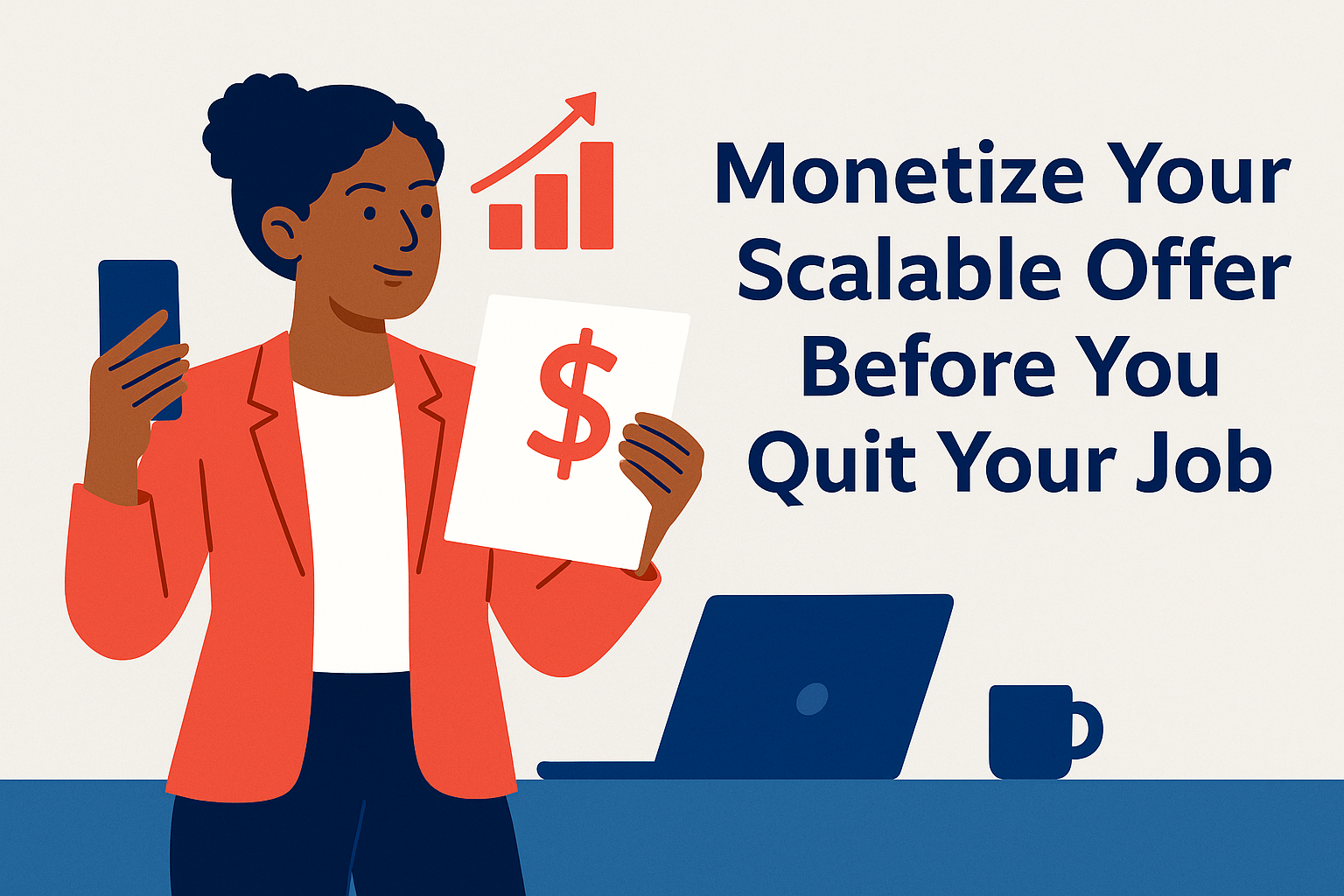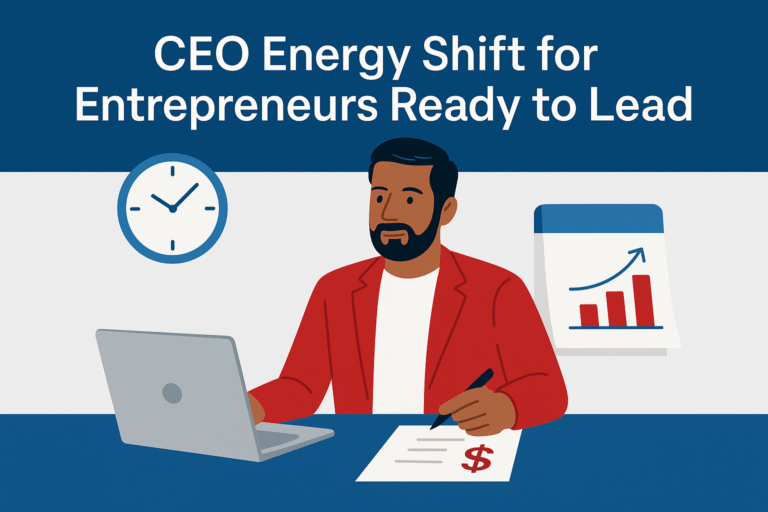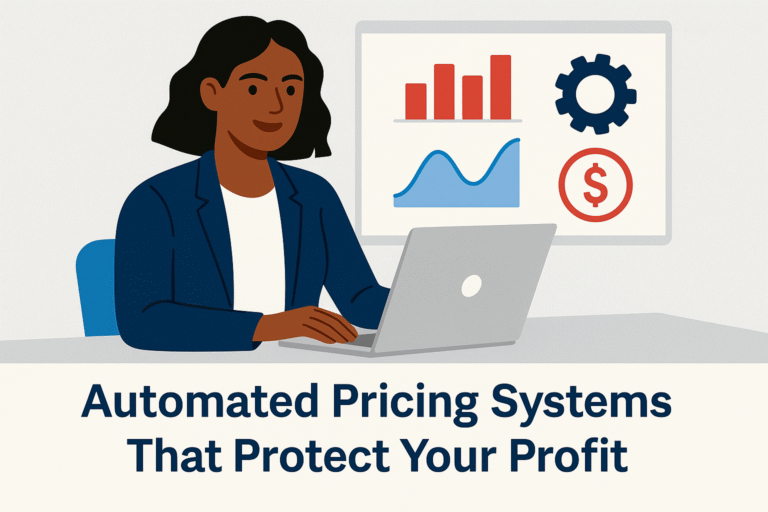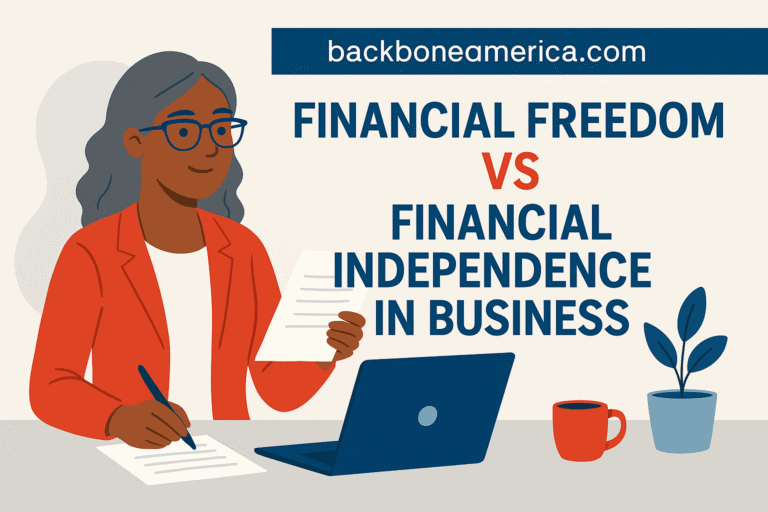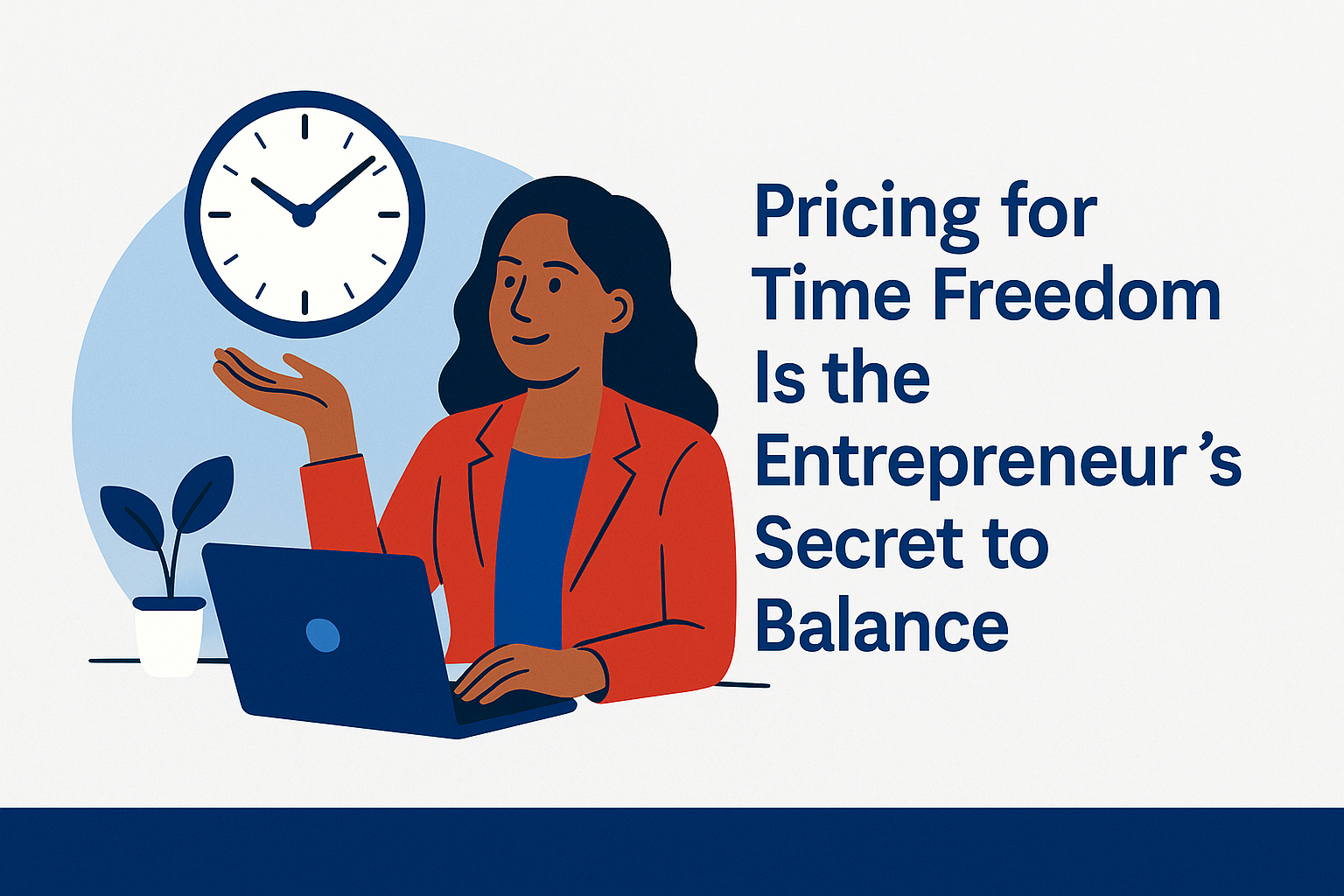Financial Freedom Friday
A CEO financial mindset is what separates earning just enough to get by from building the freedom to design your life.Employees think in terms of stability—earning enough today to cover expenses tomorrow. CEOs think in terms of sustainability—designing systems, assets, and strategies that keep producing long after the day’s work is done.
When I launched Backbone America, I was still stuck in employee money habits. I wanted safety, not growth. But safety only carried me so far. The turning point came when I realized that if I wanted long-term freedom, I couldn’t just manage money the way I always had. I had to lead it.
And that’s the shift every aspiring entrepreneur faces. If you’re still working your 9-to-5 while building a business, this mindset is even more critical. It’s what transforms limited hours and resources into a foundation for lasting wealth and real independence.
What a CEO Financial Mindset Really Is
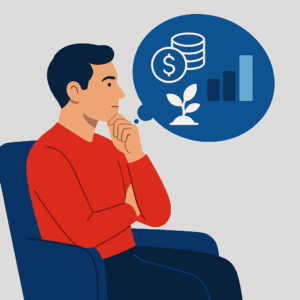 A CEO financial mindset is ownership thinking. It’s the shift from “How do I get paid for my time?” to “How do I build something that generates value even when I’m not working?” That perspective reshapes the choices you make today and the freedom you’ll have access to tomorrow.
A CEO financial mindset is ownership thinking. It’s the shift from “How do I get paid for my time?” to “How do I build something that generates value even when I’m not working?” That perspective reshapes the choices you make today and the freedom you’ll have access to tomorrow.
Instead of focusing only on income, CEOs focus on profit, reinvestment, and sustainability. They ask questions like: Does this decision strengthen the business long-term? Will it create equity, or just cover this month’s bills?
I learned this firsthand after being laid off. For years, I had equated financial security with having a steady paycheck. But losing that job made me realize how fragile that stability really was. Later, when I took a teaching job for the sake of security, I found myself in an environment so stressful it sent me to the ER with chest pains. That was the wake-up call: security without control isn’t freedom.
What I needed—and what I eventually built through Backbone America—was the mindset of a CEO. One that wasn’t content to trade time for dollars, but instead prioritized building systems, assets, and strategies that could support long-term financial and personal freedom.
Breaking Free from Employee Money Habits
Most of us grew up wired to think like employees about money—trade hours, wait for raises, cling to benefits. It feels safe—until that safety is gone.
The CEO financial mindset flips that script. Instead of asking, How do I stretch my paycheck? you start asking, How do I build streams of income that don’t depend on my hours? Instead of seeing money as something you earn and spend, you start to see it as a tool to invest, multiply, and protect.
I’ll be honest: I had to unlearn this myself. For years, I leaned too heavily on my salary for stability. When I started rebuilding Backbone America, I began treating my own contributions as equity—fuel I was putting into an engine that would one day run without me. That shift made me more intentional. I wasn’t just paying bills anymore; I was building something that could fund my freedom long after the work was done.
And that’s the practical difference: employees prioritize security, but CEOs design for growth. One protects the present; the other builds the future.
The CEO’s Approach to Risk and Reward
Employees are taught to avoid risk. Keep your head down, do your work, and don’t rock the boat—because if something goes wrong, your paycheck is on the line. But with a CEO financial mindset, risk isn’t something to run from. It’s something to evaluate, manage, and leverage for growth.
The difference is intention. CEOs don’t gamble blindly; they take calculated risks, knowing why each move matters. Investing in marketing, automation, or a new offer isn’t just “spending”—it’s positioning the business for a return. Risk becomes strategic: What’s the potential upside? How do I minimize the downside?
When I came back to Backbone America after years of working in government, I invested in automation skills and systems because I knew those were multipliers. They reduced errors, saved time, and gave me the leverage to scale without burning out. That wasn’t a reckless risk—it was a deliberate move that aligned with my long-term vision.
Here’s the truth: avoiding all risk is the riskiest move of all. Staying in “safe mode” often means stagnation. CEOs understand that the path to long-term success and freedom isn’t about eliminating risk—it’s about taking the right risks at the right time
Long-Term Wealth vs. Short-Term Paychecks

Employees tend to measure success in pay periods. CEOs measure it in equity, recurring revenue, and long-term sustainability. It’s not about “How much can I bring in this month?” but “How much value am I building that will still pay me a year, five years, or even ten years from now?”
I’ve lived on both sides of that equation. When I was teaching, I knew exactly what would hit my bank account every two weeks—but I also knew I’d never have more than that unless I gave more of my time. Compare that to Backbone America: when I put in effort to build a system or create a resource, it keeps working for me. That single shift—from short-term income to long-term wealth—has been the foundation for every bit of freedom I’ve earned.
And it’s not just theory—leaders who keep sight of a long-term vision make sharper choices in the moment and build results that last. Harvard Business Review shows how to balance immediate goals with long-term strategy.
Systems and Automation as Financial Strategy
A CEO financial mindset isn’t only about how you manage money—it’s about how you manage the systems that protect and grow it. Too often, entrepreneurs focus on squeezing in extra hours when what they really need are better workflows. Systems don’t just buy you back time—they stop money from slipping through the cracks.
Think about it: a manual process can let money slip through the cracks. A missed invoice, a forgotten follow-up, or even a small pricing error can eat into profits. But when you build systems—whether that’s automating invoices, creating SOPs, or tracking costs—you stop the leaks. Every dollar has a purpose, and every process runs with consistency.
I learned this while rebuilding Backbone America with only a couple of hours a day to give. Without automation, my business would have stalled. But with tools and SOPs in place, I didn’t need to rely on memory or mood to keep things moving. The system carried the load when I couldn’t. That’s how a part-time effort could still grow into something sustainable.
And here’s the bigger point: systems aren’t just about efficiency. They’re a financial strategy. They free up your attention for decisions that matter—like pricing, reinvestment, and scaling—while protecting the foundation of your business.
Building a Business That Funds Freedom, Not Burnout
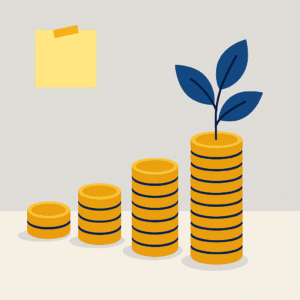 One of the traps new entrepreneurs fall into is accidentally building another job for themselves. The hours are longer, the stress is higher, and even if the money starts coming in, the freedom never does. That’s because they’re still operating from an employee mindset—trading time for money—just inside their own business. A CEO financial mindset takes a different path.
One of the traps new entrepreneurs fall into is accidentally building another job for themselves. The hours are longer, the stress is higher, and even if the money starts coming in, the freedom never does. That’s because they’re still operating from an employee mindset—trading time for money—just inside their own business. A CEO financial mindset takes a different path.
The goal isn’t just revenue. It’s sustainability. It’s creating a business that can grow without consuming your life. That’s what makes financial freedom possible—when profit and freedom are built into the same system.
I’ve lived this difference. When I was teaching, I had financial stability but no freedom—every day was controlled by the bell schedule and administrators’ demands. When I shifted into building Backbone America with systems and automation, I designed it to serve my life, not the other way around. The vision wasn’t just higher income—it was the ability to work from anywhere, to travel the world, and to know my business could keep running without me hovering over it every hour.
That’s the real essence of a CEO financial mindset: you don’t just build for today’s income. You build for tomorrow’s independence. Profit without freedom is just another cage. But profit with sustainability—that’s where long-term success and freedom live.
The Freedom Behind the Numbers
At the end of the day, a CEO financial mindset means leading your money with the same vision you bring to your business. That means thinking like an owner, not an employee: prioritizing profit over paychecks, building assets instead of just income, and designing systems that protect both your time and your bottom line.
This shift is what transforms a side hustle into a sustainable business. It’s what turns limited hours after your 9-to-5 into a foundation for lasting wealth and independence. And it’s what ensures the effort you put in today continues to pay you tomorrow.
If you’re serious about building a business that funds your freedom—not just another job with longer hours—the CEO financial mindset is where it starts.
Want guidance that goes beyond surface tips? I share strategies, personal insights, and resources through my email list—powerful, transformative content you won’t find in my blog alone. Sign up today and take the next step toward building a business that truly supports your freedom.

